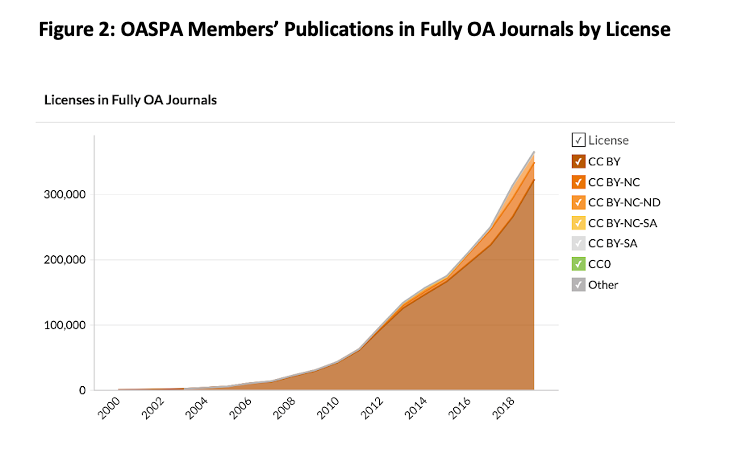News & Views: Breaking Out Open Access License Types

This month we look at the types of licenses attached to open access publications. We examine the balance between more or less permissive licenses, and the patterns make for interesting reading.
Introduction
Definitions matter when quantifying Open Access. Formal definitions of open access require that articles are both free of charge and of reuse restrictions. While Creative Commons licenses have become the de facto standard for open access publications, these licenses offer a range of permissions. Given that some funders insist on the most permissive license types, while more restricted licenses, such as those prohibiting commercial or derivative use, are also widespread, we thought a deeper look was warranted.
As part of our 2020 market sizing, we added a layer of analysis to our data which examines how prevalent different license types are. Additionally, working with OASPA on their annual members’ survey has yielded further insights into license usage.
License Usage
Licenses for reuse may be subject to different levels of restrictions. For our analysis, we define these as:
- “Permissive” refers to articles published under CC BY (attribution only required) or CC0(no restriction). CC BY is typically the license required by major funders of OA, such as Plan S, Wellcome, HHMI, etc.
- “Restricted” refers to articles published under other licenses that allow restricted reuse, such as CC BY-NC (non-commercial), CC BY-ND (no derivative), or publisher-specific licenses. Although not conforming to the strictest OA mandates, such licenses are widely used and are consistent with many OA requirements. Publishers sometimes charge lower APCs for these more restrictive licenses compared with their permissive counterparts.
- Although its impact is minimal, we include the CC BY "ShareAlike" license in the Restricted category, as it effectively imposes restrictions on use of derived works.
The use of these license types in open access is shown in the following figure.

The chart splits these licenses between content in fully OA journals (in yellow), and the OA content in other journals (“hybrid” – in blue).
- Overall, the Permissive licenses (CC0, CC BY – the paler colors) are most commonly used, outnumbering more restrictive ones by around 3:2.
- Within fully OA journals, the ratio is nearer 2:1, compared with an even split in hybrid publications.
Variations by Discipline
Looking at our full data set, which allows for deeper analysis, breaking the data out by publisher and discipline shows that patterns of use vary. For example:
- Larger publishers with mixed portfolios of fully OA and hybrid journals publish a greater proportion of their output in hybrid journals. They also publish a significantly greater proportion of their output under more permissive licenses.
- Health Sciences show a greater leaning towards more restricted licenses. In Fully OA journals there is roughly a 50/50 split between license types. In Hybrid journals, restricted licenses outnumber permissive ones by around 2:1. This is driven by Medicine in particular. Nursing ratios move closer to the market averages.
- Social Sciences show a slightly greater use of restricted licenses compared with market averages.
- Physical Sciences make the greatest use of permissive licenses. In Fully OA journals, permissive licenses outnumber restricted licenses by over 3:1 (compared with the 2:1 market average). Within Engineering this increases to 3.5:1. In hybrid journals the ratio is almost 2:1 (compared with just over 1.1:1 Market average).
This year, we have worked with OASPA on their annual survey. Figure 2 below shows an excerpt from a longer blog post we put together to show the results. The chart further supports the difference of patterns between different samples of publishers. The dominance of CC BY usage in fully OA journals reflects the make-up of OASPA members.

Conclusion
The data support what many of us know from anecdotal discussions. The majority of OA output is published under more permissive licenses. In particular the CC BY license dominates, especially in fully OA journals. It’s useful to see this confirmed across the market, and also to see how the figures differ for the large publishers.
However, licenses that allow sharing with some restrictions remain significant, and show no signs of collapsing. Many publishers continue to make use of them. In fact, restricted licenses cover the majority of output in some disciplines. Subscribers to our database can examine this in more detail and also look at longer term trends.
Of course, we have yet to see the effects of large-scale mandates such as Plan S, or the UKRI’s newer policies, on the numbers. Common sense suggests that the proportions of CC BY licensed output are likely to increase, and we look forward to revisiting the data in the coming months and years.
This article is © 2021 Delta Think, Inc. It is published under a Creative Commons Attribution-NonCommercial 4.0 International License. Please do get in touch if you want to use it in other contexts – we’re usually pretty accommodating.













